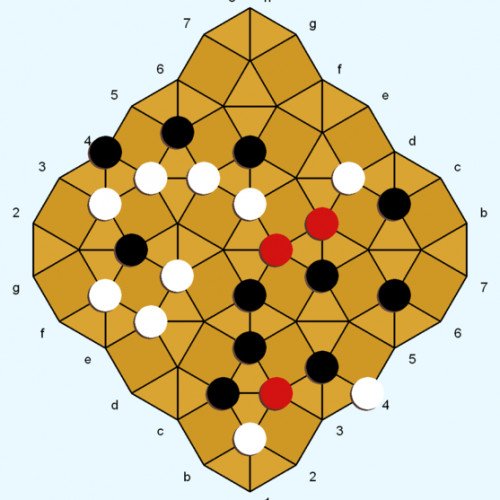COMMANDS & COLORS: ANCIENTS VS DIAMOND

COMMANDS & COLORS: ANCIENTS
Commands & Colors: Ancients is a board wargame designed by Richard Borg, Pat Kurivial, and Roy Grider, and published by GMT Games in 2006. It is based on Borg's Commands & Colors system using some elements similar to his other games such as Commands & Colours: Napoleonics, The Great War, Memoir '44 and Battle Cry designed to simulate the "fog of war" and uncertainty encountered on real battlefields. Commands & Colors: Ancients focuses on the historic period of 3000 BC - 400 AD. The core game includes several hundred wood blocks in two colors for the Roman/Syracusan armies and Carthaginian army. Sheets of stickers representing different unit types must be affixed to the blocks prior to initial play. 16 small wooden blocks representing "victory banners" and 7 larger plastic dice must also have stickers applied. Extra stickers are included for use as replacements. The game also contains a full-color rule book, color scenario book, and two color two-page double-sided "cheat sheets" for players to reference during play for dice results and unit statistics. The board is folded card stock laid flat for play. Hexagonal terrain pieces are laid on the board when called for by a scenario. A deck of command cards is included. Units are arranged on the board according to maps and scenario descriptions in the scenario book. Players are dealt a number of command cards equal to their "command value" for the chosen scenario. Often players have different command values and therefore different numbers of cards. Players take turns playing their cards to "order" units, generally allowing the ordered units to move and conduct combat. Cards often refer to a section of the battlefield, either left, center, or right, or some combination of these. There are also many special cards that allow very specific actions. Play continues until one player earns the requisite number of victory banners for the scenario. Victory banners are earned each time a player completely eliminates an enemy unit or leader.
Statistics for this Xoptio

DIAMOND
Diamond is a two-player abstract strategy board game invented by Larry Back. The invention was inspired by the game Kensington, which uses a similar board pattern and game objective. Rules for Diamond were conceived in 1985 and finalized in 1994. Diamond introduces a new board geometry and neutral pieces, with the aim of enhancing the game dynamic and lowering the potential for draws. Diamond was featured in the February 2013 issue of Games magazine. The Diamond gameboard consists of interlocking squares and triangles. White and Black each control 12 game pieces of their own color. Neutral pieces (red-colored in the diagrams) enter the game via captures. The pieces are played on the line intersections (called points, as in Go). White and black (but not red) pieces can move along straight lines to adjacent unoccupied points. A player wins by being the first to occupy all four corners (points) of a board square with their pieces. Capturing moves are possible in the Movement phase. If the points of a triangle contain exactly one white and one black piece, either player can capture the opponent piece by occupying the remaining open point ("cornering" the enemy piece on the triangle). The captured piece can be cornered on one triangle (see Example 1), or simultaneously cornered on two different triangles (Example 4). The captured piece is immediately removed from the game and replaced on its point by a neutral piece. If a move simultaneously corners two opponent pieces on two different triangles, then neither enemy piece is captured (Examples 2 and 3). A piece can move safely to a triangle point even if the other two points of the triangle are occupied by enemy pieces (Example 5).